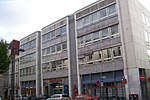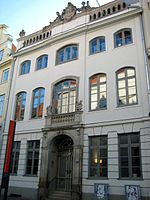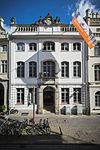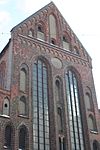Bucu
AC with 0 elementsCastles in Schleswig-HolsteinHistory of LübeckIslands of Schleswig-HolsteinRuins in Germany ... and 1 more
Schleswig-Holstein building and structure stubs
Bucu or Buku is a hill island surrounded by the Trave and Wakenitz Rivers in Lübeck, Germany. It is also the name of a medieval Slavic castle, now ruined, on the island. Count Adolf II of Holstein founded Lübeck on the island in 1143. The Burgkloster, or fortified monastery, of Lübeck is located atop the ruins of Bucu. "Bucu" is also the name of a hill.
Excerpt from the Wikipedia article Bucu (License: CC BY-SA 3.0, Authors).Bucu
An der Untertrave, Lübeck Innenstadt (Innenstadt)
Geographical coordinates (GPS) Address Nearby Places Show on map
Geographical coordinates (GPS)
| Latitude | Longitude |
|---|---|
| N 53.873611111111 ° | E 10.689166666667 ° |
Address
An der Untertrave 1
23552 Lübeck, Innenstadt (Innenstadt)
Schleswig-Holstein, Germany
Open on Google Maps











